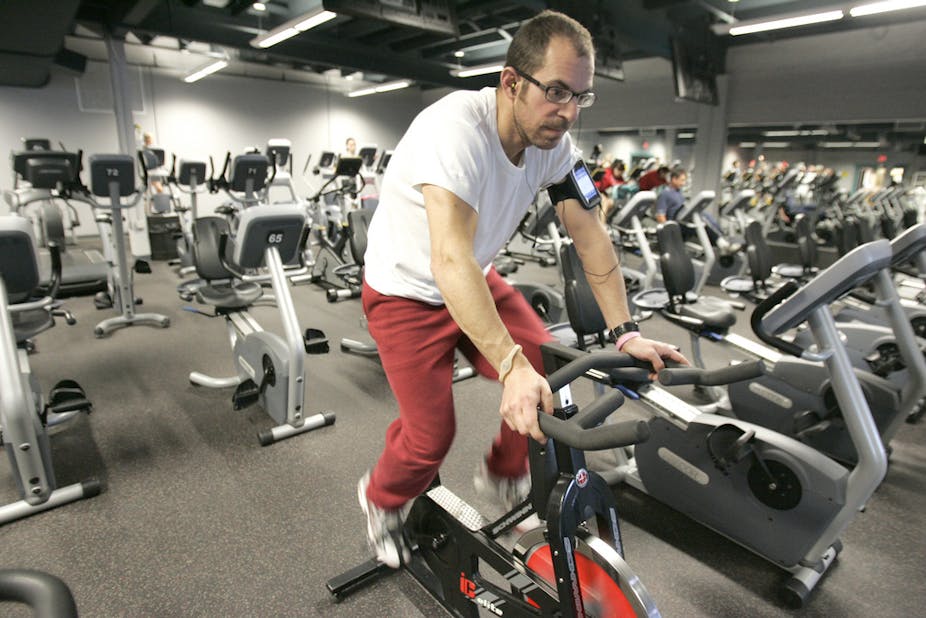Australian male sport is facing increasing public scrutiny in relation to ethics, conduct and cultural legitimacy. Our sports media is saturated with reports of drug enhanced desires for speed and strength, unsporting off-field behaviour, as well as crises in the boardroom and Olympic village “jokes” gone wrong.
As Italian philosopher Umberto Eco once said, we live in a hyper-real “sports-cubed” cultural landscape. Sport is now played, watched and discussed via multiple digital forms.
For many critics and sport feminists, Eco’s words are somewhat ironic given the attention paid to men’s sport has increasingly revealed the dark side of sport cultures and the quest for faster, stronger and more competitive (and commercial) bodies.
So, is this a key moment in which to ask what are the alternatives to the cult of speed and wining? How might sport be re-imagined beyond the normalised form it takes today?
The majority of the population are not elite athletes. In fact most of us struggle to meet the guidelines for physical activity. Millions of dollars have been spent over decades on social marketing campaigns that urge individuals to embrace activity: “Life. Be in it.”, an “Active Australia”, and most recently “Swap It, Don’t Stop It” come to mind.
Yet, as the recent CSIRO report The Future of Australian Sport identifies, participation in most organised sport has declined or stagnated. Several “megatrends” are noted including the growing demand for individual and group fitness activities, lifestyle sports, indoor technologies and outdoor adventure in the pursuit of health benefits, desirable bodies, social connections and enjoyment.
While men have a greater participation rate (42% men vs 37% women in 2010) in organised sport and physical activity more generally, women participate more “frequently and regularly” in non-organised activity. Non-competitive, enjoyable “sport” and physical cultures offer a potentially more inclusive space for women, men, younger and older persons, people with disabilities and those from different cultural backgrounds who embody different sport values.
With our changing demographics, tai chi, qi gong and yoga may emerge as future trends alongside the lifestyle sports of cycling, parkour and slacklining. With an ageing population these questions about the provision of diverse sport opportunities and active spaces become even more important. Yet much of the sport, physical activity and recreation research and policy ignores the diverse sociocultural context shaping the bodies that engage in (or reject) sport.
So, how might we play differently and embody a different sport ethos? Is there another Australian sport narrative to be told that embraces sport as slow, social and sensuous?
Over the last decade or so we have witnessed the rise of “slow cultures” in the activities and publications of various “slow living” movements – food, media, cities, sex and tourism are examples. “Slow” signifies an ethos that is critical of hyper-consumerism, hyper-competitive workplaces and social scenes, in the search for “alternative hedonism”, as described by British philosopher Kate Soper, through downshifting, voluntary simplicity and everyday forms of embodied mindfulness.
In my research into cycle touring, I completed an ethnography of a nine day ride over 600km to explore how women experienced “slow” forms of movement. Cycling 80kms everyday with with 1000 other people was valued because it was “not a race”. You could ride at your own pace, socialise and enjoy a convivial, leisurely experience that was challenging and well-managed.
Many of the women described cycling as their everyday “sport”, and when it felt safe, as a commuting preference. Some left their husbands at home because they were too focused on the arrival not the journey, others rode alone and made new friends, while existing cycling groups made the trip their shared time together.
I recall the most challenging day as we cycled (then walked) up the hills of Maleny, near Queensland’s Sunshine Coast, with a 10% gradient. Cyclists of all ages encouraged each other with banter as they went past and a woman in her late 60s shouted out: “I’m getting there in my own time, but not bad for an old girl, hey”.
The pleasure of cycling was not derived from owning expensive bikes, wearing lycra or achieving a fast time over a hard course. It was the embodiment of the “slow” ethos - a sensory engagement with the world, feeling exhausted and elated at what the body can do (despite age, injury or disability) and the creation of a mobile community. Competitive sport has its place for those who enjoy the thrill of the chase and the contest.
Yet, there is a far richer array of sport and physical culture experiences that we need to explore through a different poetics of the body in movement. And speed is a relative concept - it is still possible to embrace the slow ethos and enjoy an exhilarating fast downhill ride.

